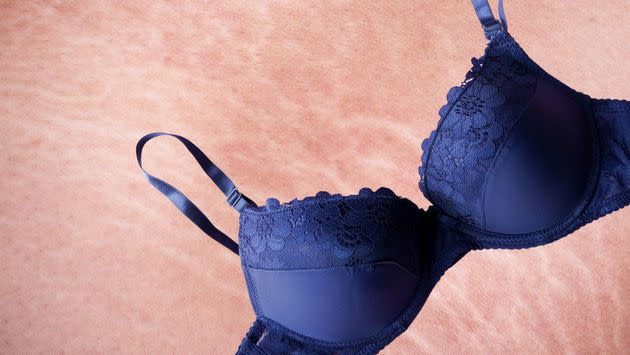What To Do If You Have Stretch Marks On Your Breasts

When we think of stretch marks, the image that often comes to mind is deep, streak-like lines found on the buttocks and thigh area. However, stretch marks can occur wherever your skin has the ability to stretch, and the breasts are no exception.
Plastic surgeon Emily Kirby explained to HuffPost that stretch marks in the breast area form the same way as stretch marks found in other areas. “It begins with our skin’s collagen and elastin, the proteins that keep our skin firm, and give it the elastic quality that allows it to expand and contract in response to moderate fluctuations in shape and size,” she said. “During periods of rapid growth or stretching, the inner layer of skin (the dermis) may not be able to produce collagen and elastin as quickly as our skin is stretched, resulting in very small tears. These tears eventually heal into the linear and indented scars we know as stretch marks.”
Kirby explained there are a number of reasons stretch marks can occur on the breasts: “Breasts are a common area to see a rapid change in size, due to puberty, weight gain, weight loss and childbearing,” she added. Genetics can also play a big role in determining who develops stretch marks, as well as hormonal conditions such as Cushing’s syndrome, which causes the body to produce too much cortisol, according to dermatologist Anna Karp. Similarly, “individuals with larger breasts are also more prone to stretch marks due to the skin being stretched further than that of those with smaller cup size”, said aesthetic doctor Amy Watson.
A supportive bra in the correct size can be helpful in preventing stretch marks — Karp told HuffPost that “going braless, as well as working out without a sports bra, for long periods of time only increases your risk for stretch marks.”
If you want to prevent stretch marks from forming or even worsening, there are things you can do to take good care of your skin. “Certain lifestyle habits, such as smoking and UV exposure, have a negative impact on your skin’s elasticity, making it more likely that stretch marks will form,” Kirby said. “If you want to prevent stretch marks (and skin aging in general), avoid smoking and always wear protective clothing — or sunscreen — on any exposed areas.”
If you’ve already got stretch marks and you’d like them to fade, keep in mind that topical treatments can be helpful in lessening the appearance of the stretch marks, but they won’t make them completely disappear. “While topical applications may help stretch marks to fade in color and also smooth their texture, they will not completely erase stretch marks,” Kirby said. “Patients looking to significantly fade stretch marks are best served with collagen-stimulating skin treatments, such as microneedling or lasers, or surgery that involves skin excision.”
But if you’re not interested in going that far, here are seven dermatologist-approved skin care favorites for treating stretch marks.
HuffPost may receive a share from purchases made via links on this page. Every item is independently selected by the HuffPost Shopping team. Prices and availability are subject to change.
This article originally appeared on HuffPost and has been updated.



